| Home; Aviation; Cameras; Fiction; Health&Safety; Military; MS-Apps; Non-Fiction; Submarine; Technical; Trains; Watches; Transportation |
|---|
SR-71 Blackbird Comments
By John L., October 2012.
Edited by David 15 October April 2012.
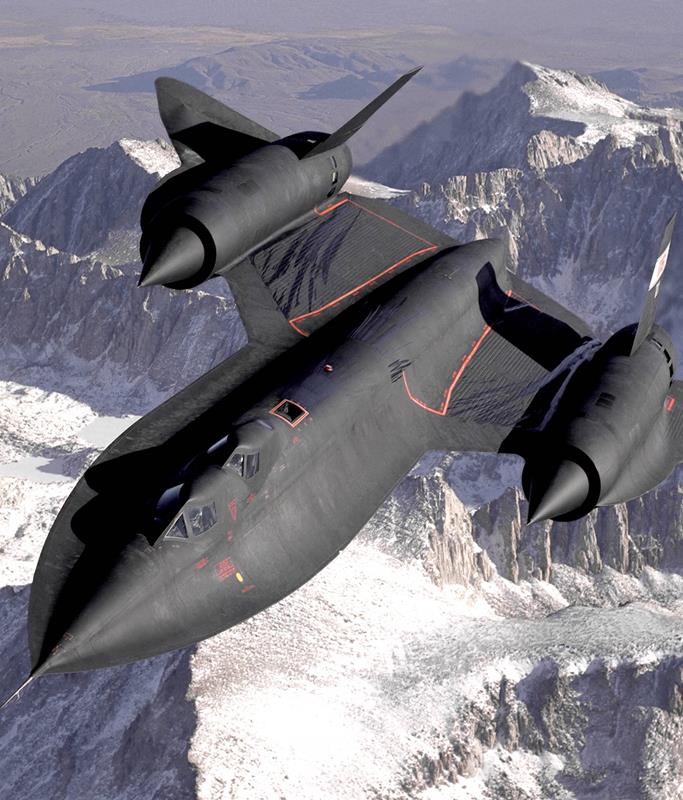 |
| SR-71 two-cockpit trainer version in flight. There were three models: SR-71B (two of these) and one SR-71C which is on display at Hill AFB. |
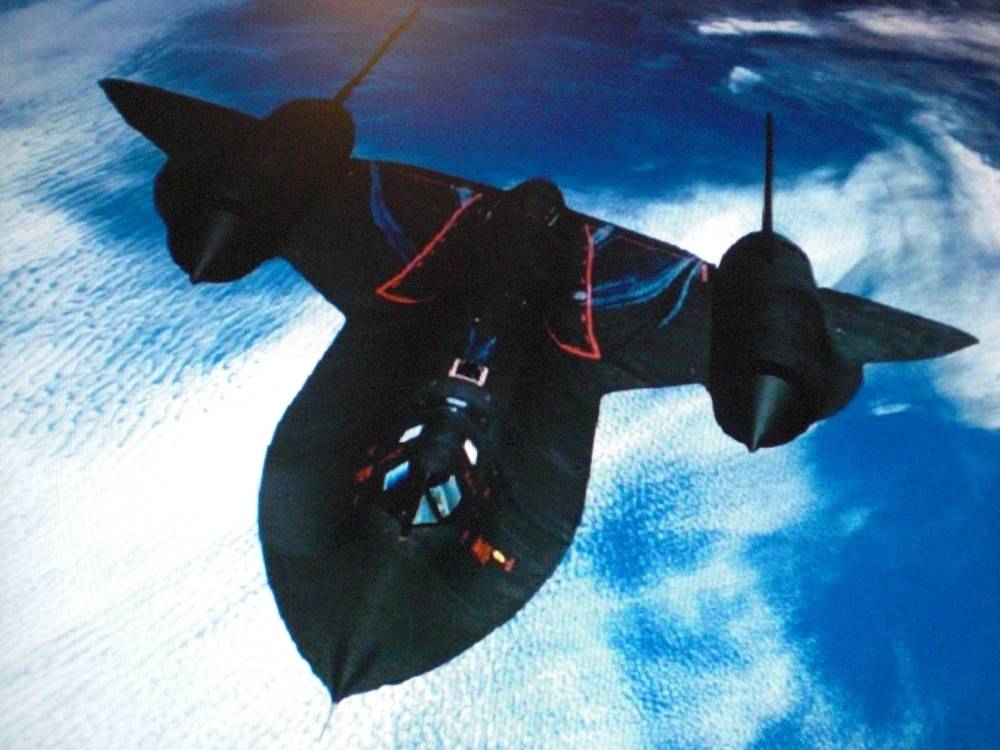 |
| SR-71 in flight. This is the reconnaissance version of which 29 were built. |
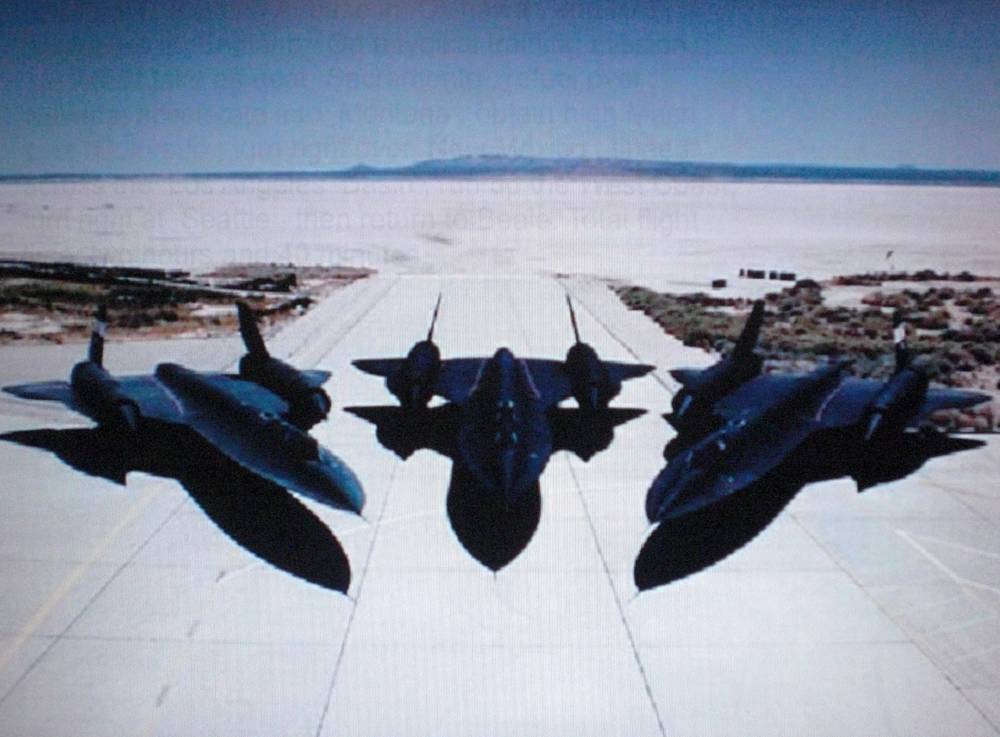 |
| SR-71 aircraft, perhaps at Groom Lake (Area 51) where the prototypes were test flown. |
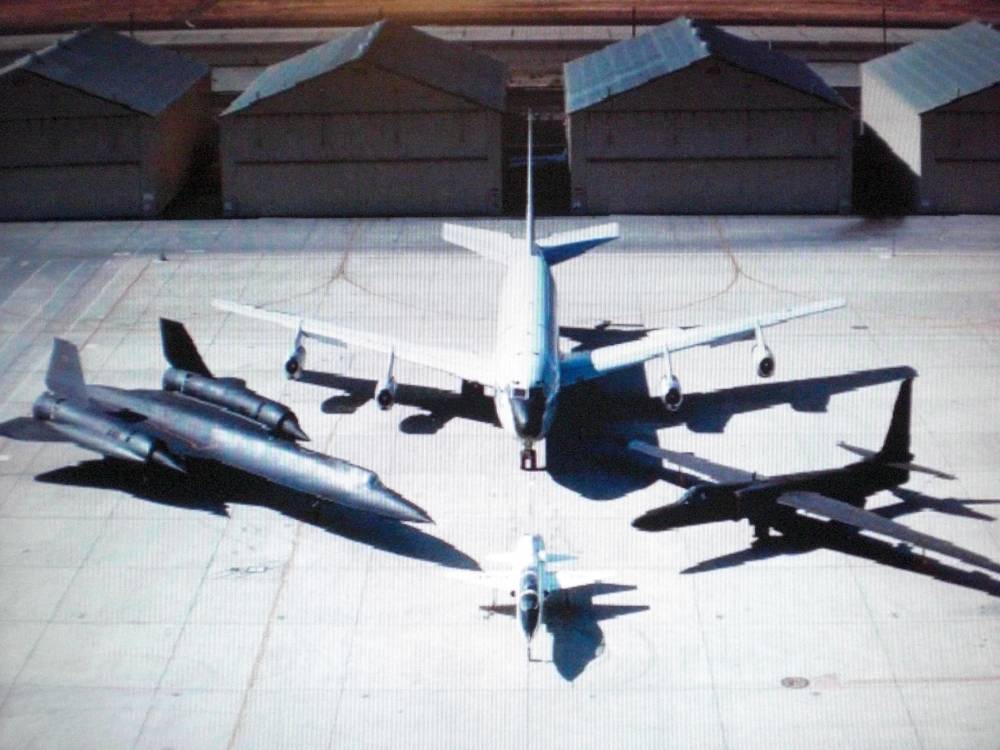 |
| From Left: SR-71, KC135Q tanker that carried the special JP-7 fuel, U2, and a T-38 used by SR-71 pilots to maintain their flying skills and as a chase plane when an SR-71 was low and slow in the immediate area. |
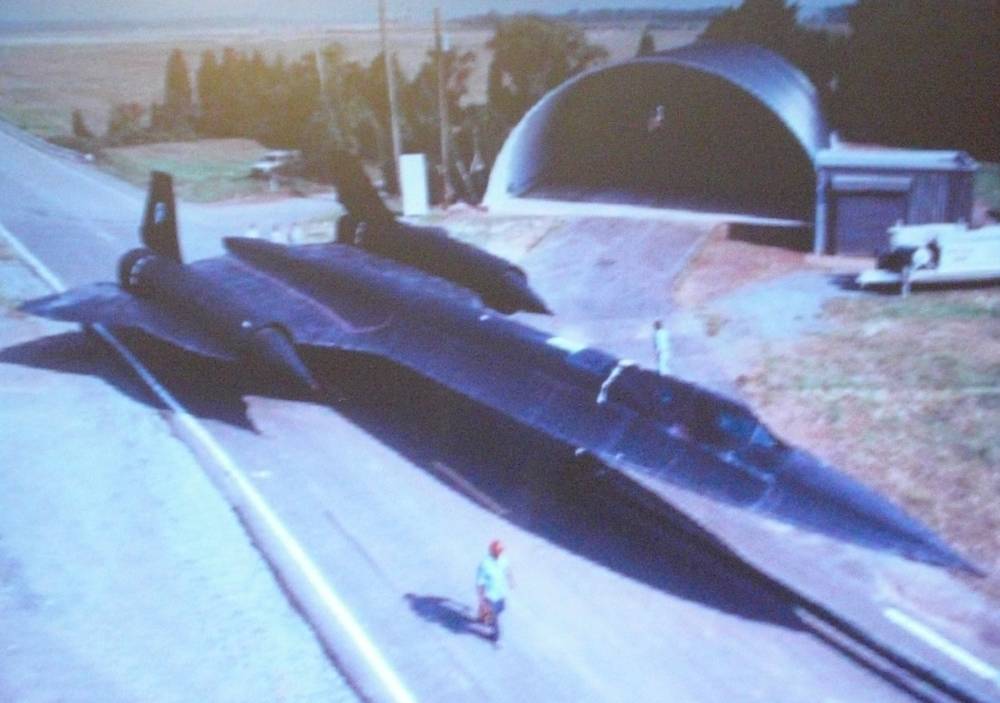 |
| SR-71 at a corrugated steel Quonset revetment. |
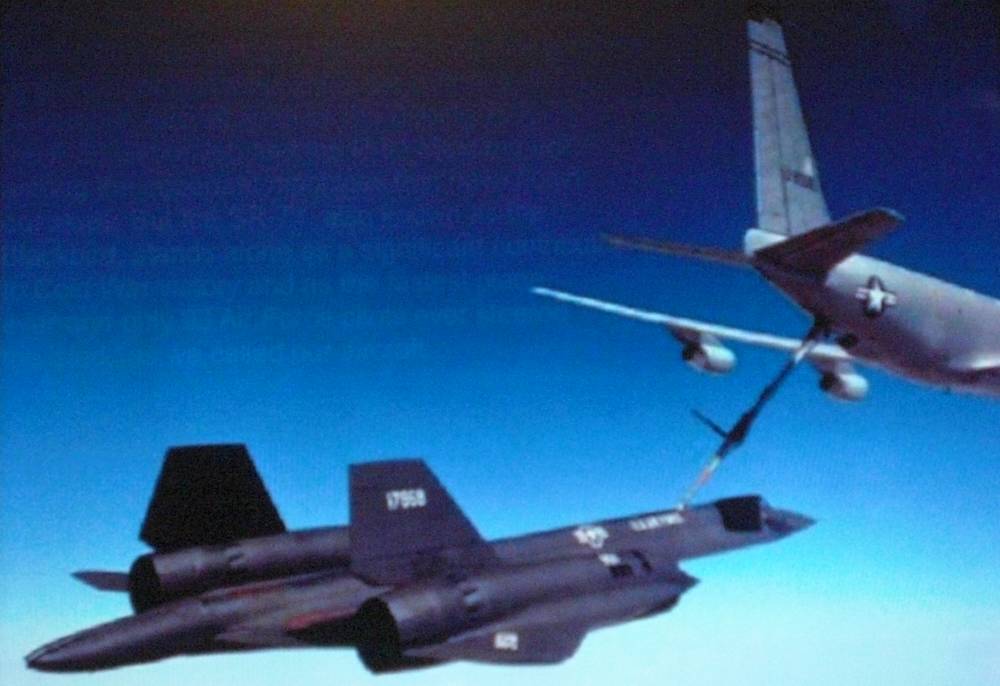 |
| SR-71 tanking. Taking on a full fuel load took about 15 minutes. |
On Okinawa during the Vietnam era we got to see a few take-offs of the SR-71. Kadena Airbase was always bustling with activity. If you were driving by and nothing was going on, it was time to find a place near the fence and park. After not too long a wait, four F-4s [McDonnell Phantoms] would take off followed shortly by a KC-135 tanker and an old [Boeing] 707 with VERY loud engines.
Then the fun started. A strange, whiney roar came from somewhere in the distance and shortly you could see the SR-71 rolling toward the runway. There was no waiting for tower clearance, she just kept rolling into take-off position and the pilot poured the coals to her. I don't think I've ever heard any noise like it, and I've heard a lot of interesting noises. As the SR-71 lifted off, four more F-4s followed her into the air. If you waited long enough you would see the KC-135 return followed by eight F-4s. We never did see an SR-71 return but I suspect F-4s were involved to escort it down below 60,000 feet to a landing.
Comments by the editor:
I had never heard that F-4s were used to protect the SR-71s out of Kadena, but then I had never heard that a fighter followed Air Force One in U.S. airspace and did a low approach over the field after AF One landed for visual and radio confirmation that all was OK until I saw it happen at an airport where a president had arrived and a low approach over the field was made by a McDonnell Douglas F4D Skyhawk. For the SR-71, the F-4s were probably put aloft to ensure protection for the Lockheed SR-71 Blackbird in its most vulnerable environment: Low altitude, low speed, and tanking, not to mention the fact that any radar installation tracking the KC-135 would know exactly where the SR-71 was headed after takeoff.
To place less stress on the airframe during takeoff, the SR-71 was loaded with a minimal amount of JP-7, enough for it to take off and fly to the tanker with some reserve left. The reserve would allow it to return to base if tanking was not possible because the intercept was not made, there was difficulty offloading fuel from the tanker, the SR-71 was unable to accept fuel, or an emergency occurred.
The blackbird burned a lot of JP-7 on takeoff and climb out at relatively low airspeed and altitude, not to mention that after the tanks were filled on the ground, they leaked badly at the expansion joints that would seal at high speeds after the aircraft skin heated up. In fact, photographs of the Blackbird on a KC-135Q tanker (the ones that carried the JP-7 fuel for the Blackbirds) show a mist of fuel behind it. Tanking after takeoff was necessary to perform the mission, and once it dropped off the tanker, the SR pilot side-stepped the tanker and immediately accelerated to a high Mach climb to get the tanks sealed to conserve fuel. Once the SR-71 exceeded 70,000 feet as it climbed to its operational altitude of 95,000 feet (plus) and cruise speed of Mach 3 (plus), it was pretty safe from other aircraft and even Mach 5 missiles.
As for the Boeing 707, it seems that it might have been a command and control ship, probably outfitted with a lot of communications gear and radar. In the interest of saving a few bucks, perhaps the Air Force outfitted the old 707 with what was needed instead of sending an AWACs aircraft aloft. Besides, when any nation sees an AWACs orbiting overhead, it might get a little nervous because sending up an AWACs is step one to executing a war and achieving air superiority.
Back to the observer's SR-71 Story:
Decades later, at the Pima Air Museum near Tucson, I took a bus tour of the Museum grounds, interested in seeing the SR-71 that I had seen there, years before. The bus driver was retired Air Force who provided a knowledgeable narrative. The bus came to the spot where the SR-71 had been parked, and it was gone! The plane was gone, the signs were gone, and only the wheel marks showed where it had been.
I asked the driver what happened to it. He said it was out for some kind of maintenance, painting or something, and quickly changed the subject to go on with his spiel. Something just didn't sit right with me. Later, as we were, driving away, it occurred to me that this was during the first Gulf War, and this bird must have been repositioned for flights over the middle east! Besides, the Blackbird doesn't need any paint. It is titanium alloy, which won't rust or corrode, and paint will burn off in high-speed flight! The Blackbird must have been serving again and some crew got the thrill of taking her up once again on another of its highly classified flights.
 |
| SR-71 in flight |